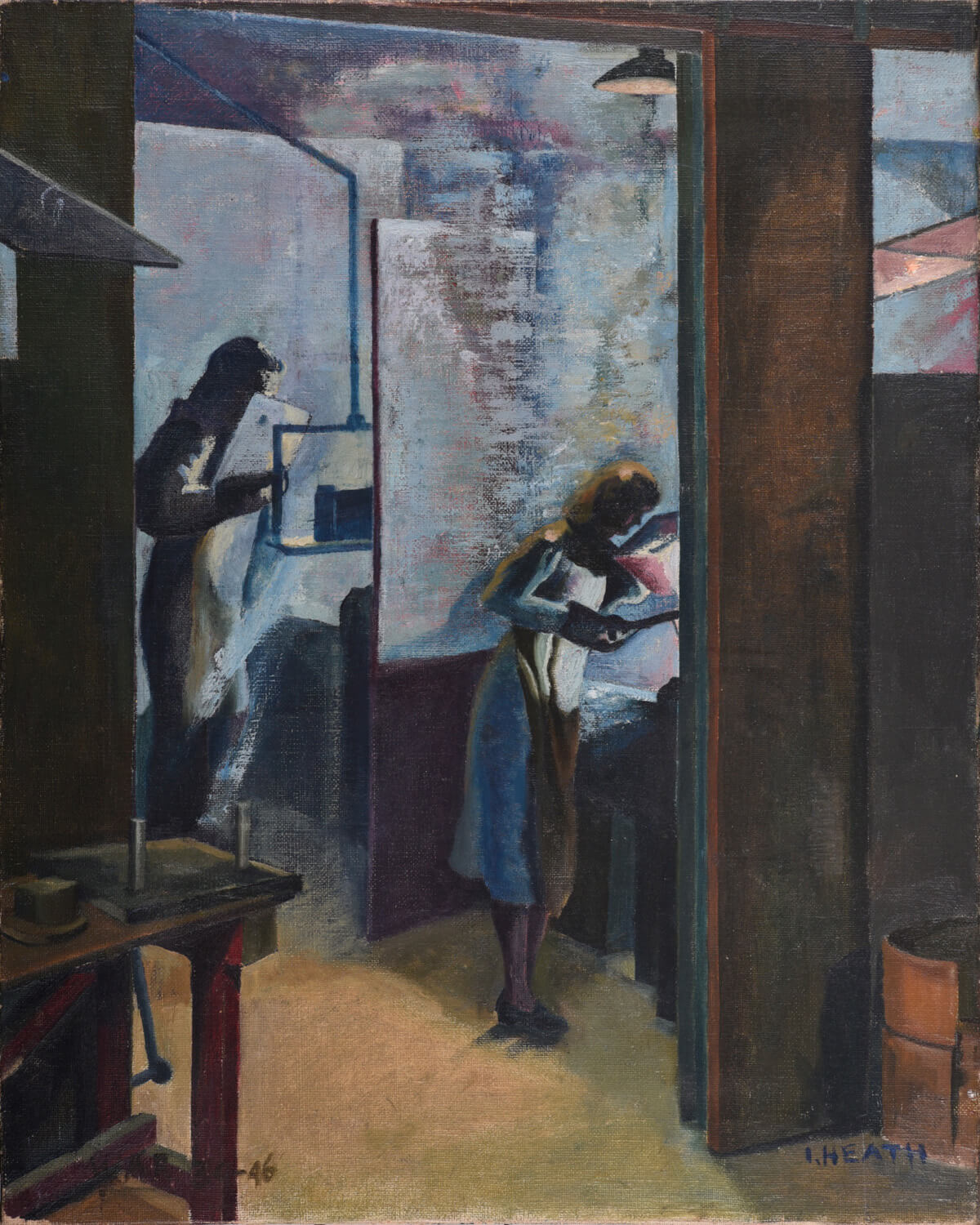Isobel Atterbury Heath (1908 - 1989)
£5,000
Size:
Height – 51.3cm
Width – 41.8cm
1 in stock
Britain in the Second World War was a country that can never be
reclaimed. Even in what turned out to be the last years of its empire,
the nation could still harness formidable resources of skilled labour and
technology. Minesweepers, for instance: in the five years between the
war’s start and D Day, the Royal Navy increased its fleet from around
40 to 1,200, many of them (like this dry-docked example in Atterbury
Heath’s picture) made of wood to make them less vulnerable to magnetic
mines. Another kind of mine, the acoustic, explains the strange bucketlike
device on the ship’s bow. Mines that could be set off by noise were a
new development in 1940, but by 1942 British scientists had developed a
counter-measure called the acoustical hammer, which sat inside a conical
steel box and when the button was pressed or the lever pulled made a
tremendous noise – loud enough to detonate acoustic mines at a safe
distance from the ship.
Both sides laid minefields – to damage enemy ships and to protect
their own – but Britain developed a particular expertise in them. They
caused significant losses to ships, cargoes and lives. German minefields
are estimated to have sunk nearly 300 British warships and a similar
number of merchant ships. British mines sent a total of more than 1,000
Axis ships of all kinds to the bottom. The shape of the bow on Atterbury
Heath’s minesweeper suggests it belongs to the MMS type, of which
more than 400 were built. They were small ships, built quickly; their
acoustical hammers have a touch of Heath-Robinson. Sailors knew them
as the Mickey Mouse’ class. The work the Mickey Mice did was brave
and invaluable.
Commentary by Ian Jack. Jack is a writer and journalist who has edited The Independent on Sunday and the literary magazine Granta. He writes regularly for The Guardian. He learnt to tell the difference between cruisers, destroyers, minesweepers, frigates and corvettes during his childhood on the Firth of Forth.

Isobel Atterbury Heath studied at the Acad mie Colarossi in Paris
and later Leonard Fuller’s St Ives School of Painting in the 1930s.
During WWII, she was commissioned by the Ministry of
Information to paint workers in munitions factories and at a
camouflage factory in St Ives, which gave her the opportunity to
showcase how women were employed outside the perceived female
wartime roles of nurses and care-givers.
She broke away from the STISA to help found the Penwith
Society of Arts in 1949, but resigned in 1950 and rejoined STISA
in 1957, continuing to exhibit with them for the rest of her life.
She also showed with the ROI, the RI and the RSA, and was
included in the 1955 centenary exhibition of the SWA in London.